
One of many design proposals by Pininfarina
Design of the 1992 Cadillac Seville and Eldorado
by Dick Ruzzin, and Gary Smith
Edited by Gary Smith
Part Four—Eldorado Creation
The Pininfarina Threat
Dick Ruzzin:
There was the emerging threat from Pininfarina in Italy for the design of the Eldorado.
Cadillac had contracted Pininfarina, a world-class Italian design company, to submit an Eldorado design proposal in competition with Cadillac Studio. This proposal did not include the Seville, only the Eldorado.
Many of the key Cadillac executives wanted Pininfarina to win the contest, as they had formed a good working relationship with the company during the development of the Allante. Furthermore, Cadillac Division’s past relationship with Cadillac Studio was not the best.
During Cadillac Studio’s Eldorado development, Pininfarina was allowed to see what we were doing but we were not allowed to see their design proposal that was under development. That was not fair, but the reasons were never disclosed to me by Chuck Jordan. I was not about to ask. Chuck knew Sergio Pininfarina well and was a big Ferrari fan.
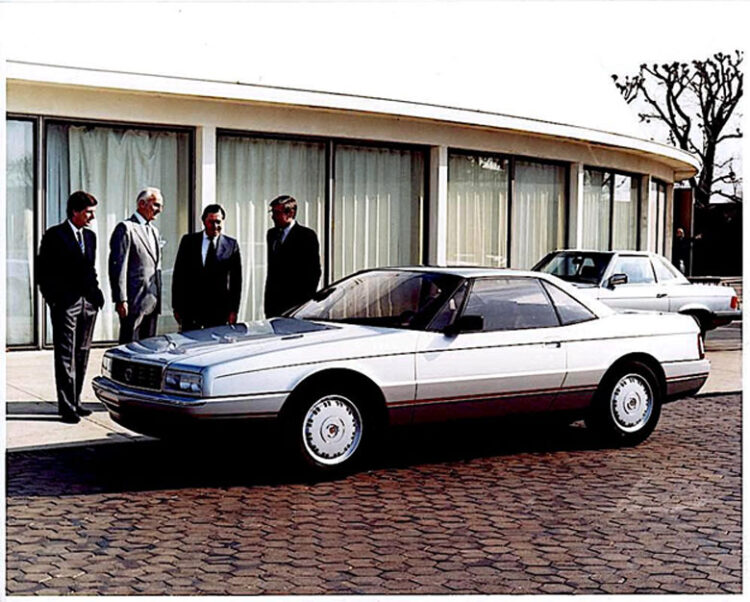 Cadillac Allante
Cadillac Allante
The Cadillac Allante was designed by PininFarina. It did not look like a Cadillac. If it had it would have provided design influence on the Eldorado and Seville that we were designing. While the design of two Cadillac concept cars, the Voyage and the Solitaire, were going on in the Advance Design Studios for the General Motor’s Teamwork and Technology show, Cadillac Studio started working overtime to create the 1992 Seville and Eldorado (they would do that without stopping for 2–1/2 years straight).
During Design’s search for the new designs, there was corporate intrigue was going on behind the scenes. The Allante design was the first step by GM and Cadillac Division to establish a new source for design that would be necessary in the future if Cadillac would no longer be part of General Motors.
Cadillac in Trouble
Cadillac could not meet the U.S. government’s required fuel economy mandates. In addition, General Motors’ image had deteriorated significantly because of bad build quality. Cadillac’s association with GM was not seen as a positive one, and GM was developing a plan to ensure Cadillac’s future. Cadillac had dragged General Motors down financially for years and had to be put out of business, become totally separated from GM, or be placed in a position where it was not seen as being associated with GM. Those scenarios were under study and the first common moves had already been put in motion. That was only known by the Design Vice President, Chuck Jordan, Dave Holls (Jordan’s Executive Design Assistant), and myself.
When I was told this two weeks after I had been assigned to Cadillac Studio by Dave Holls, I could not take it seriously. He said that he was not supposed to tell me, but that he felt it unfair for me not to know. The idea seemed impossible—I could not accept it. General Motors could no longer continue bleeding money to support Cadillac. Arrangements had already been made with Isuzu, Suzuki, and Toyota to sell some of their products under license in the U.S. to increase the GM aggregate fuel economy numbers. We had federalized the lighting for those cars in Chevrolet Two Studio before I was transferred to Cadillac. All GM Divisions needed the latest technologies to meet the government fuel standards. However, no one thought that it would be possible for Cadillac to meet the new fuel economy requirements because size was the only thing that Cadillac still had that distinguished itself from the rest of GM’s offerings. When Cadillac lost its size as well as its historic technological advantage, Cadillac’s identity suffered. Cadillac Division was preparing for the unimaginable day when the future would change dramatically and be separated from General Motors.
The second step in Cadillac’s plan was for the Italian car design studio PininFarina, who had designed the Allante, to also design the 1992 Eldorado. Cadillac had created a competition between PininFarina and Cadillac Studio at GM Design Staff. As designs were developed in Italy and America, we had several product clinics that included Cadillac Studio’s Eldorado in competition with the Eldorado from PininFarina. The designs were judged by potential customers of all kinds, even by people who would never own a Cadillac, but still felt that Cadillac was very important for America. In an environment of great adversity and failure, the strength of America’s enthusiasm for Cadillac was greater than assumed. Considering the situation that was a surprise for both the Cadillac Division and the designers in Cadillac Studio.
Cadillac’s Protective Side Molding Debacle
Cadillac had always had a protective body side molding. However, Chuck Jordan was looking ahead to the day when cars would no longer have protective body side moldings, and he wanted Cadillac design to lead the movement. Because of this, Cadillac Studio was not allowed to put protective body side moldings on the Eldorado design proposals that were being evaluated against PininFarina’s Eldorado. We did not know that a body side molding was a feature that Cadillac customers valued greatly; consequently in the clinic we lost every to PininFarina every single time, even though the Cadillac designers felt that our design was better. Finally through the clinic process we figured out the problem. However, by then it had been decided by Cadillac Division and GM management that the Pininfarina design that had won all the clinics would go into production because we had already passed the release date for both the Eldorado and the Seville designs.
Eldorado Skunk Works
Gary Smith
1985. Oldsmobile 2 Studio was tasked with developing a design for the 1992 N-body (which would be called the Achieva) sharing that platform with the Pontiac (Grand Am) and the Buick (Skylark). I was in Oldsmobile 1 Studio. Long story short, Dave Holls picked a couple of my sketches off the wall and asked me to create a full-size rendering over the N-body platform. That rendering was moved to Oldsmobile 2. And that design became the foundation for what eventually became the 1992 Achieva.
See the post on Dean’s Garage about the development of the Acheiva.
What does the Achieva have to do with the design of the Eldorado?
The Grand Am’s and the Skylark’s designs both had a monocoque body side to upper form vocabulary, popular during that time frame. A look favored by Chuck Jordan.
In contrast, the Achieva’s design theme had the upper sitting on the lower with a definite shoulder running the length of the body side. That was the design element that caught the eye of Dave Holls. (The design also borrowed Bill Porter’s “apple section” body side which I was attracted to having worked under Bill in Buick.)
This next part has some speculation. On March 14, 1986 I was told to report to the basement for a clandestine project. Along with Tom Peloquin (designer), three sculptors including Mark Kasmer (incredibly talented), and a studio engineer, we became a secret studio that lasted about 45 days. It was buried in the basement somewhere with no windows and no name.
Dave Holls was behind this. The point of this exercise was to create a shouldered body side as an alternate direction to the monocoque designs being developed in the real studio. Cadillac Studio Chief Wayne Kady was understandably not thrilled with what was going on. To add insult to injury, I requested to borrow centerline and wheel opening templates from the model being developed in Cadillac Studio to save time.
The hastily-prepared model had two patio reviews, the last one attended by Chuck Jordan. I expected him to hate it, and he didn’t disappoint. It wasn’t an exciting design to be sure.
However, many of the designs developed later by Advanced 1 Studio had shouldered uppers. So I speculate that the shouldered upper we put together influenced those designs somehow, no doubt at the direction of Dave Holls. But I have no idea if this is really the case.
I was rewarded by not being fired and was sent back to Oldsmoble 1.
But it wouldn’t last. I was permanently transferred to Cadillac Studio on 8/21/1986.
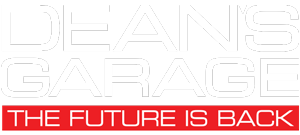
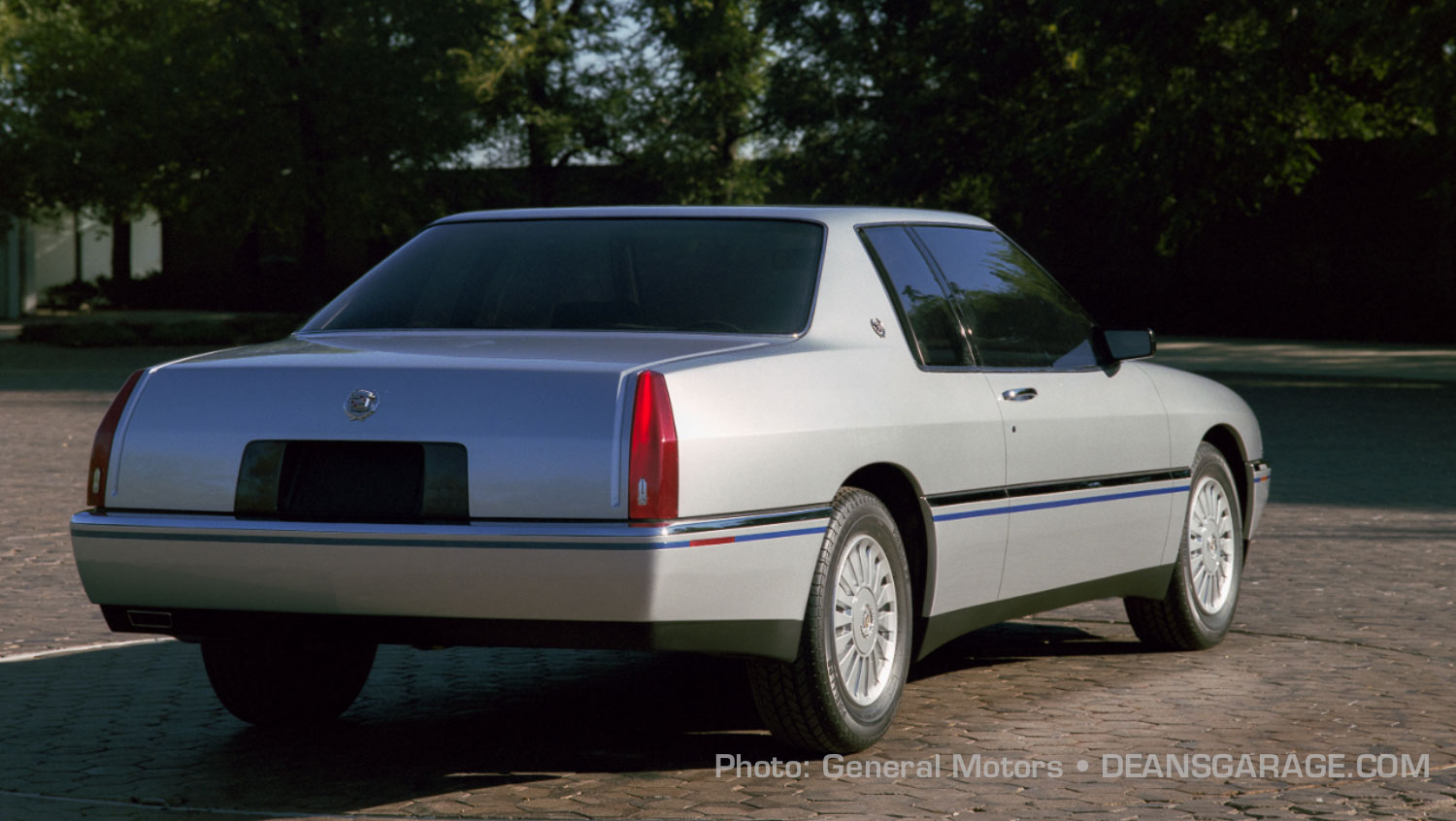
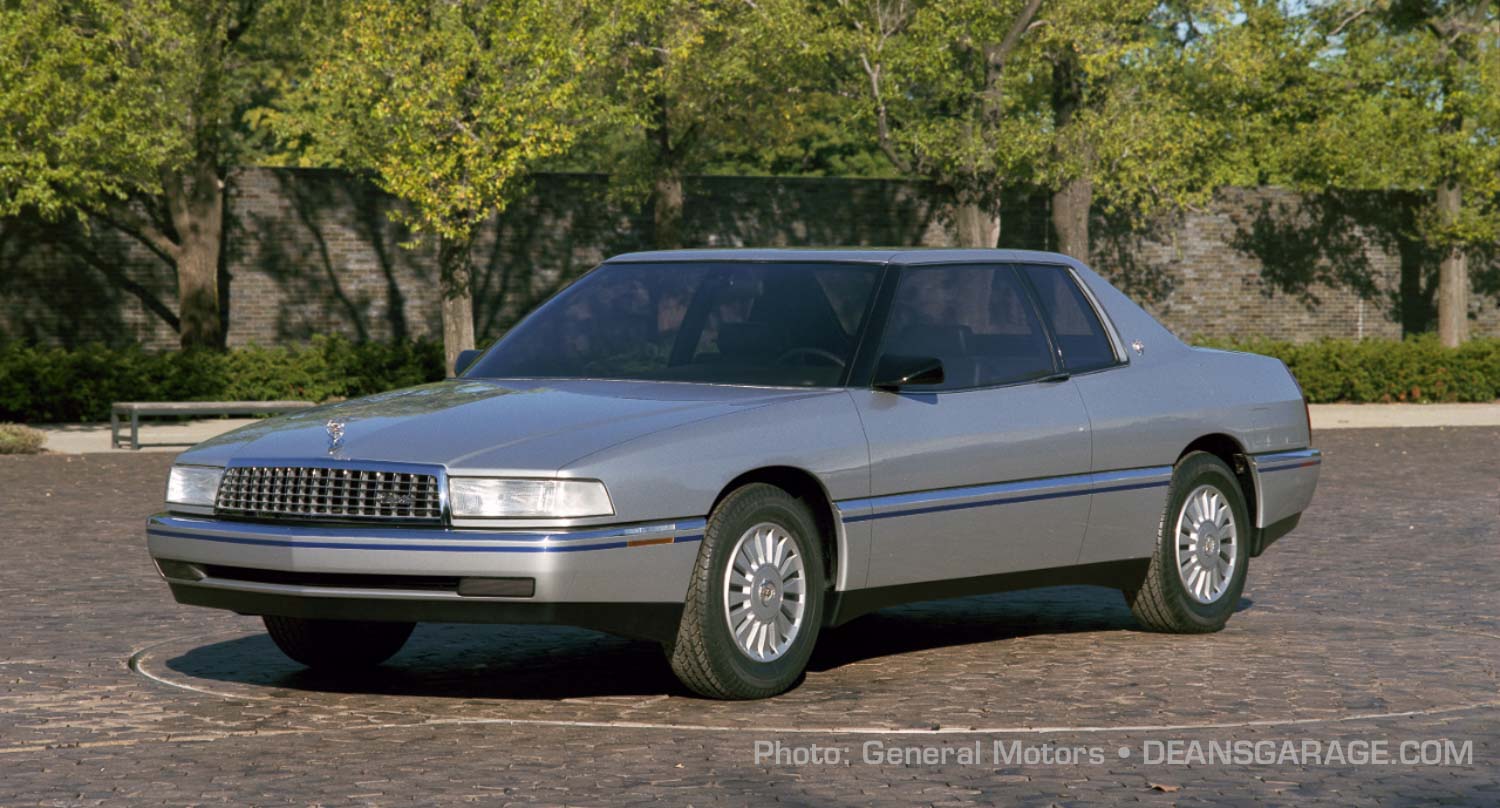
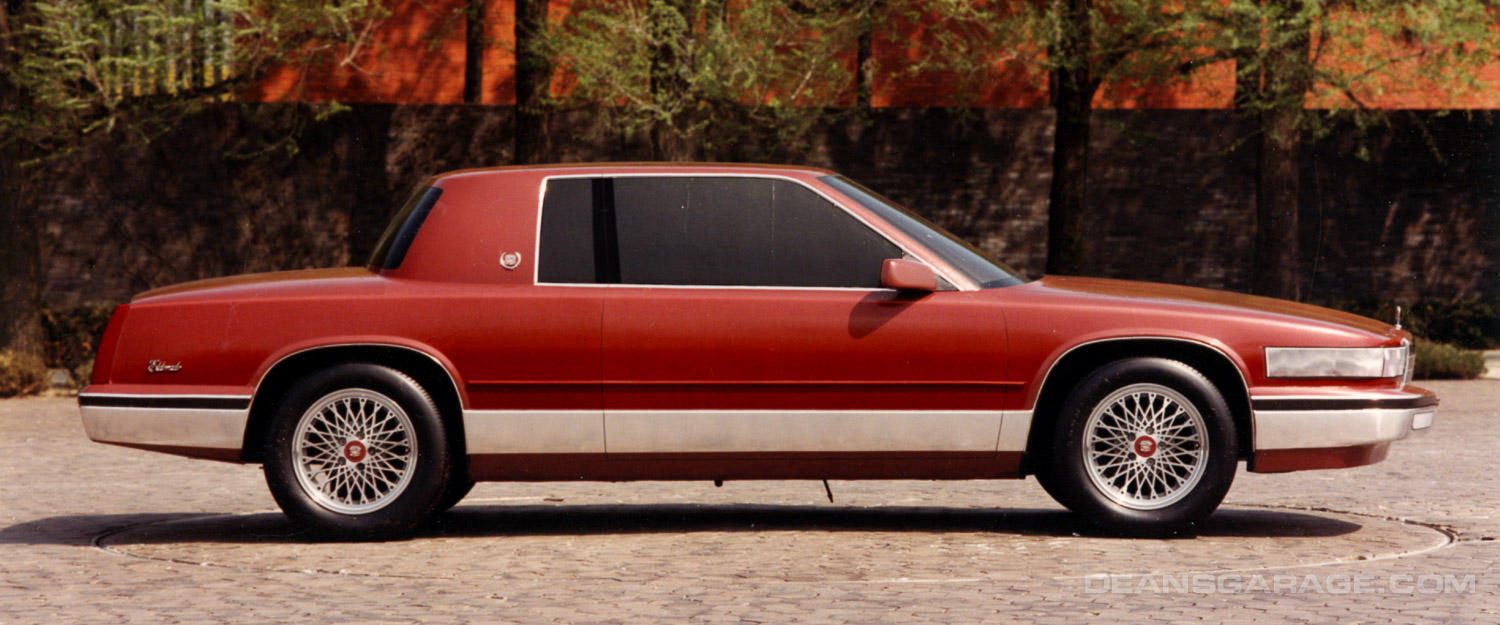
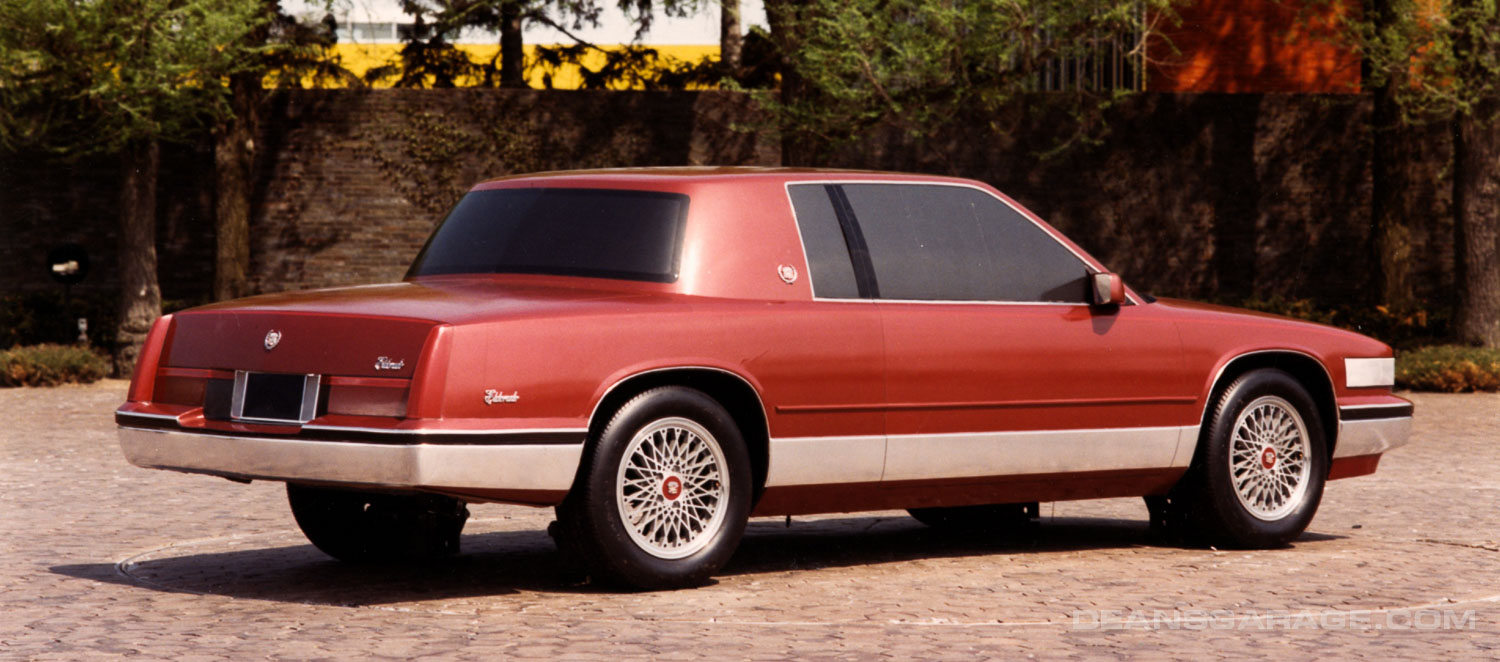



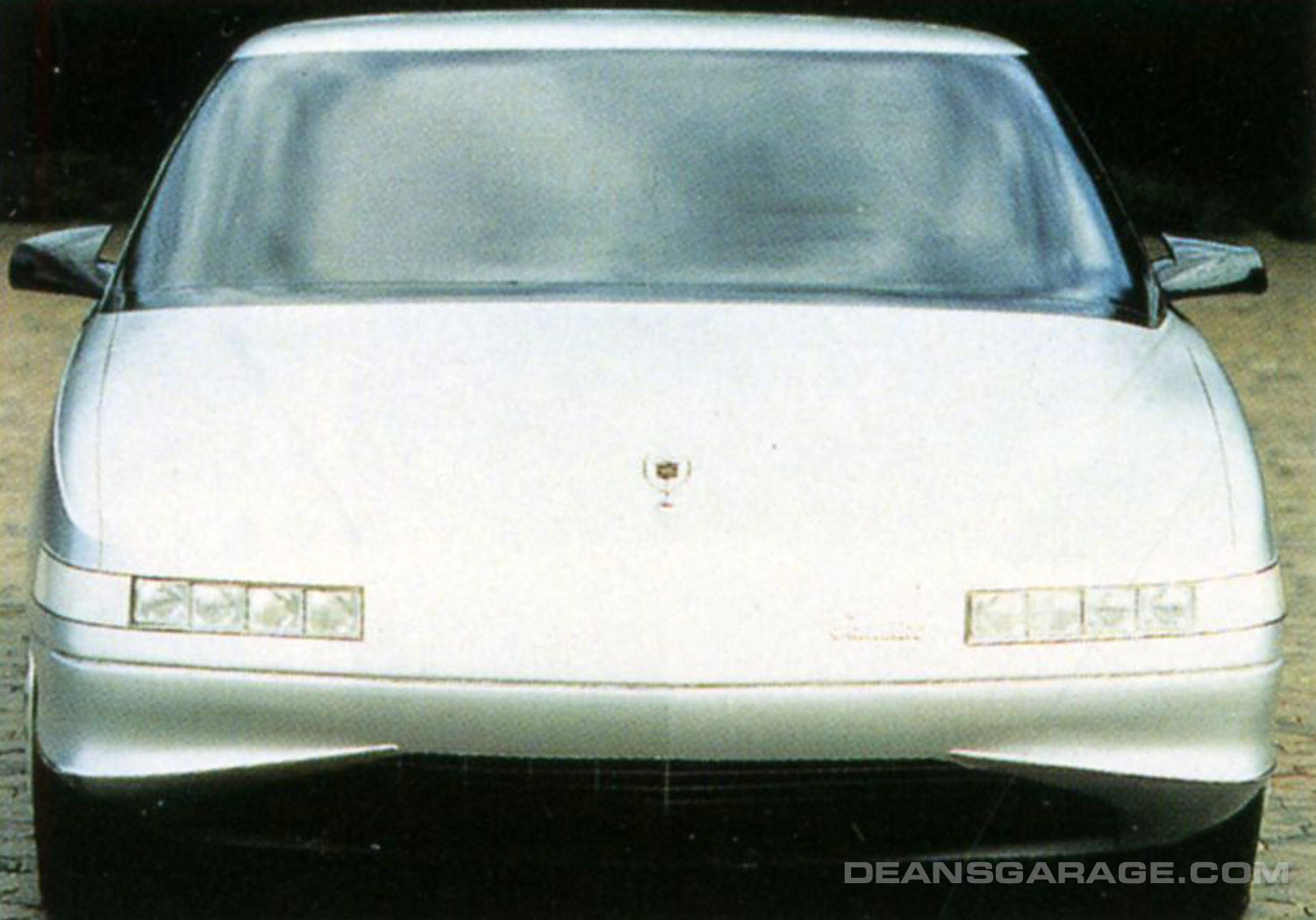
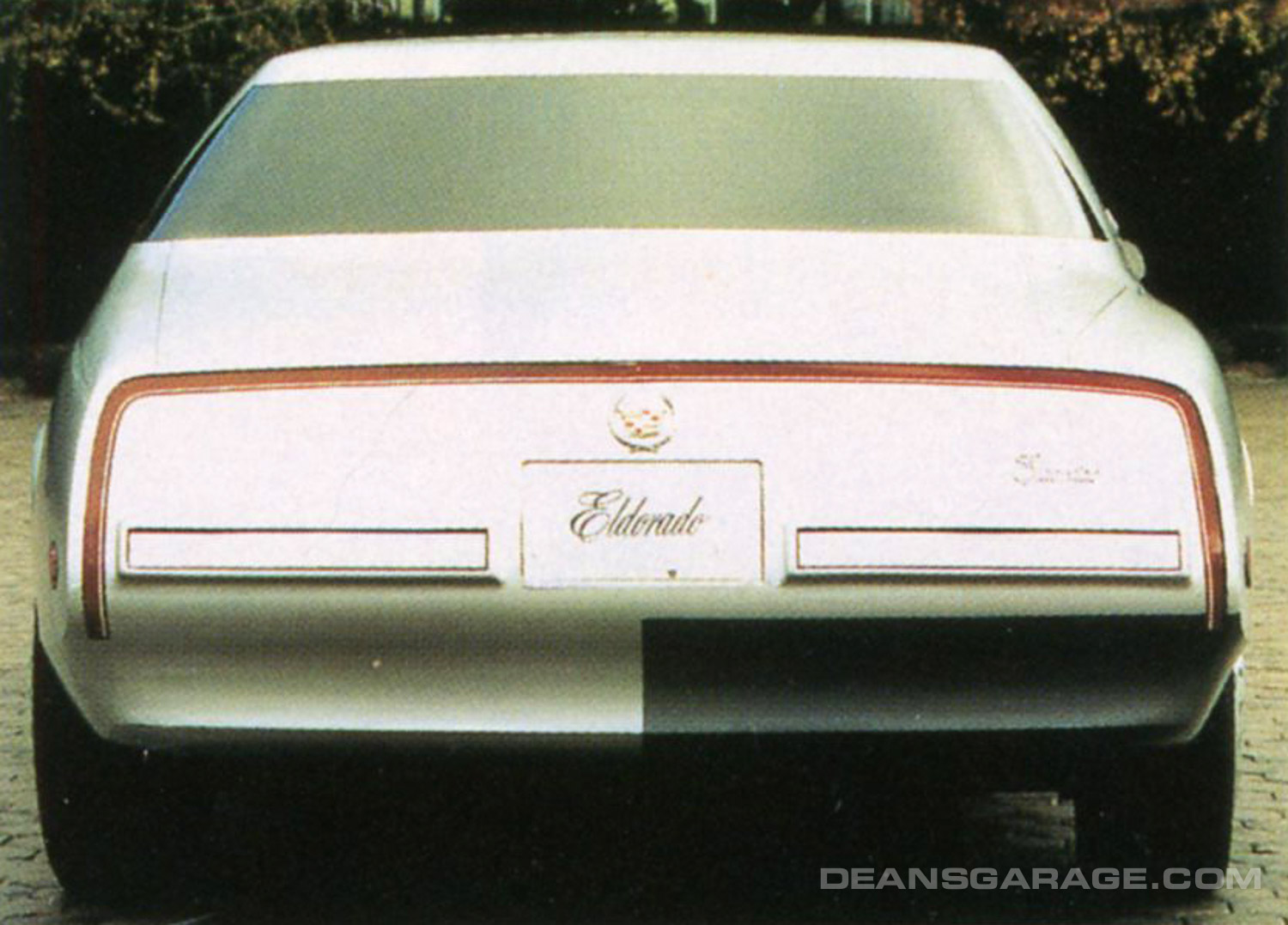

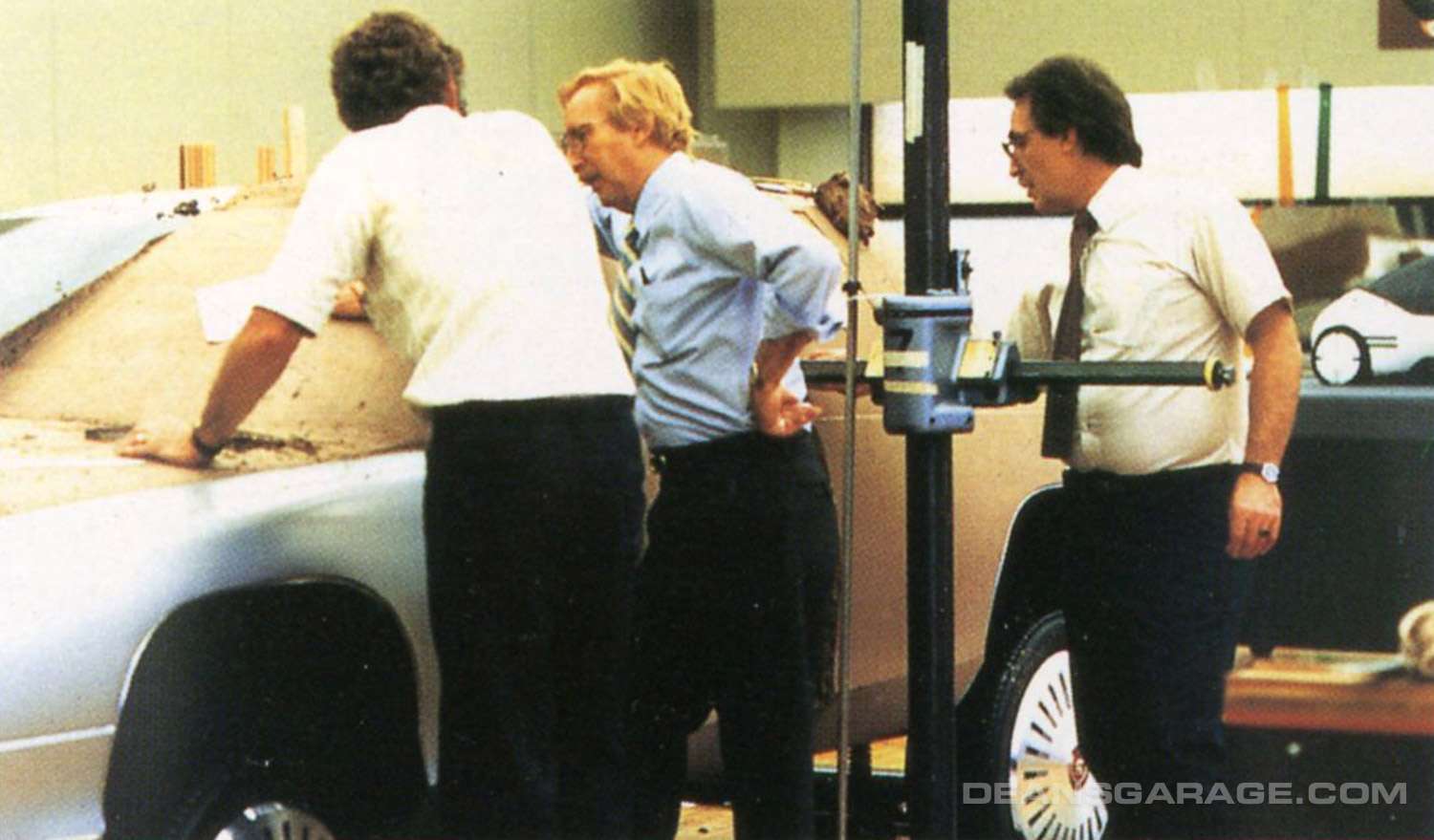
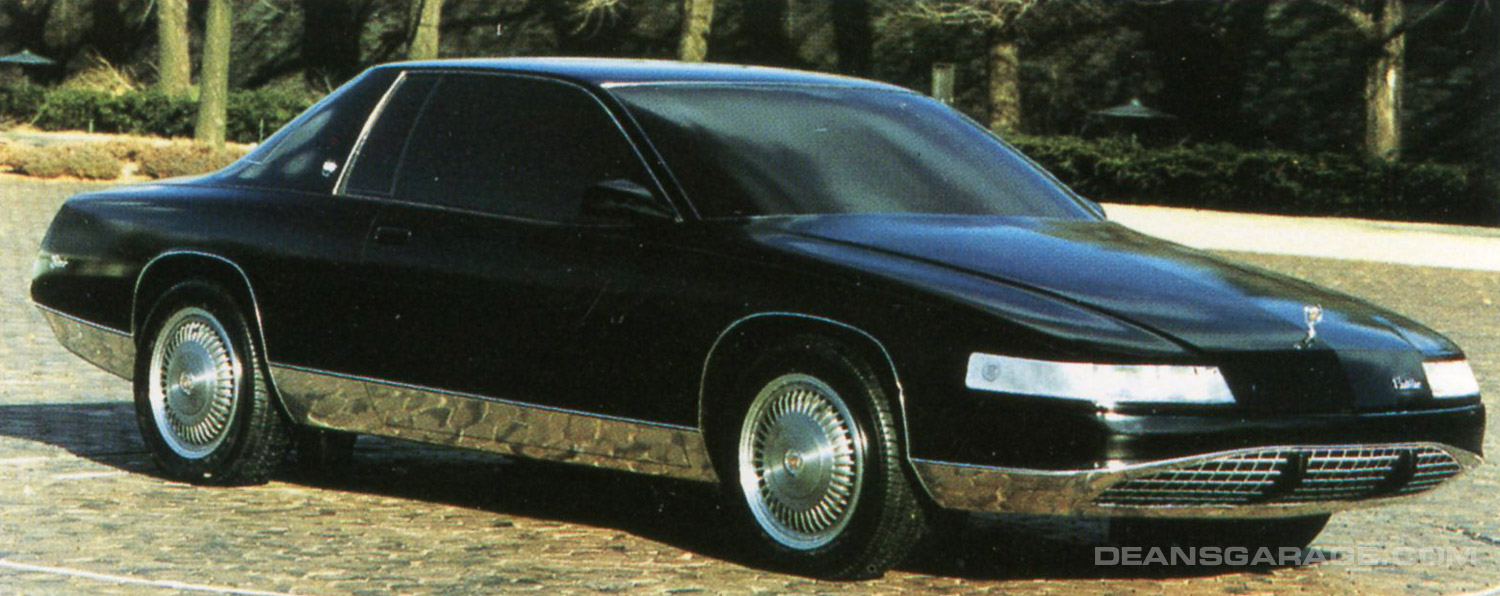
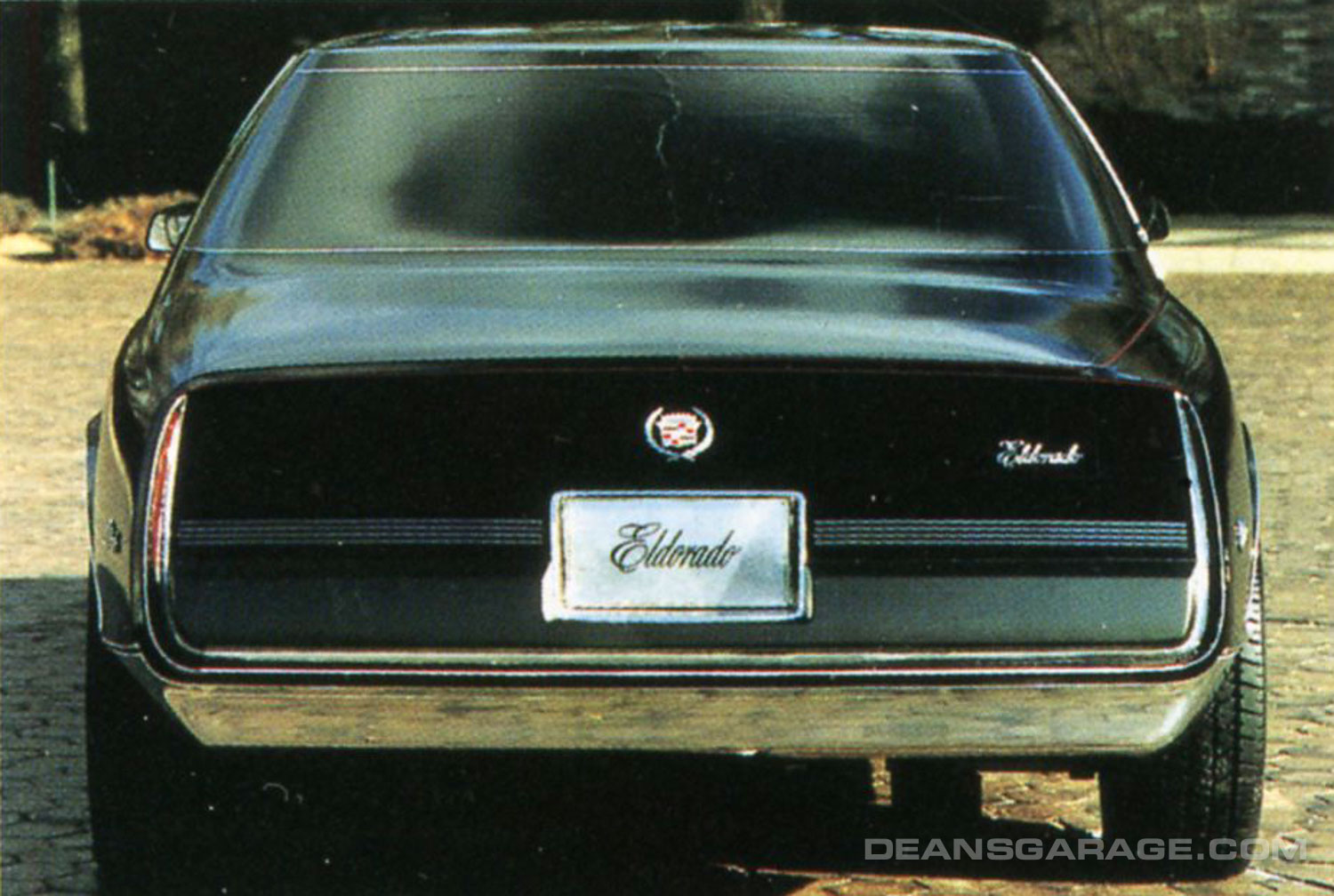
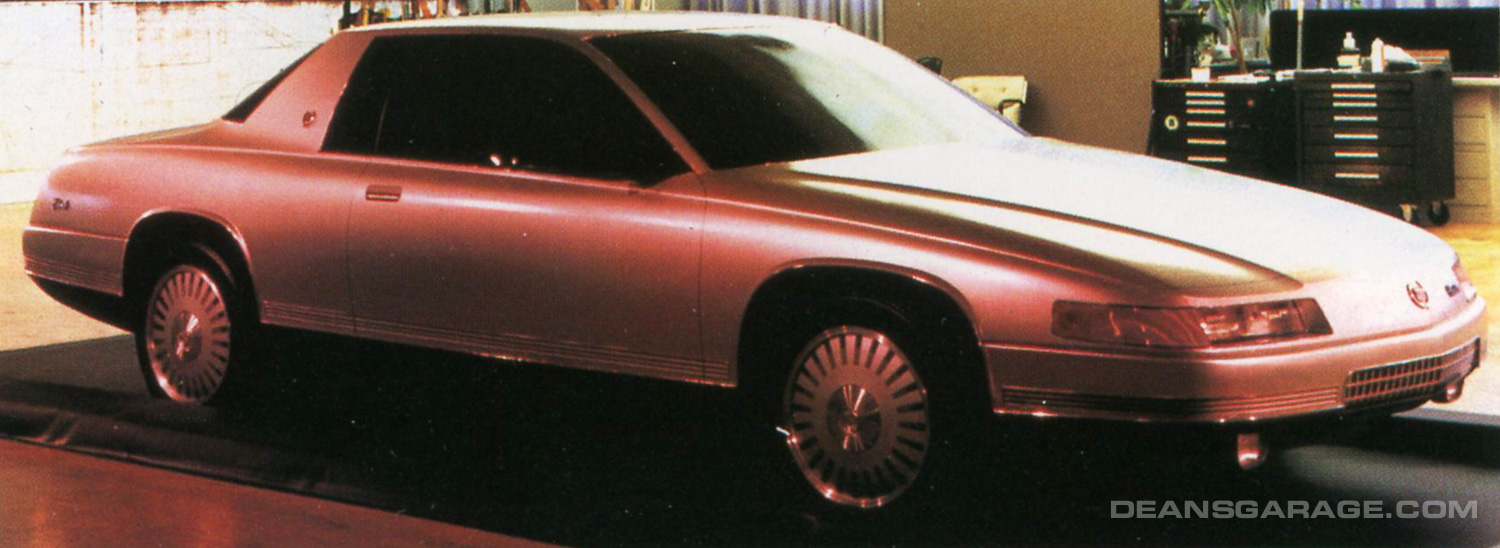

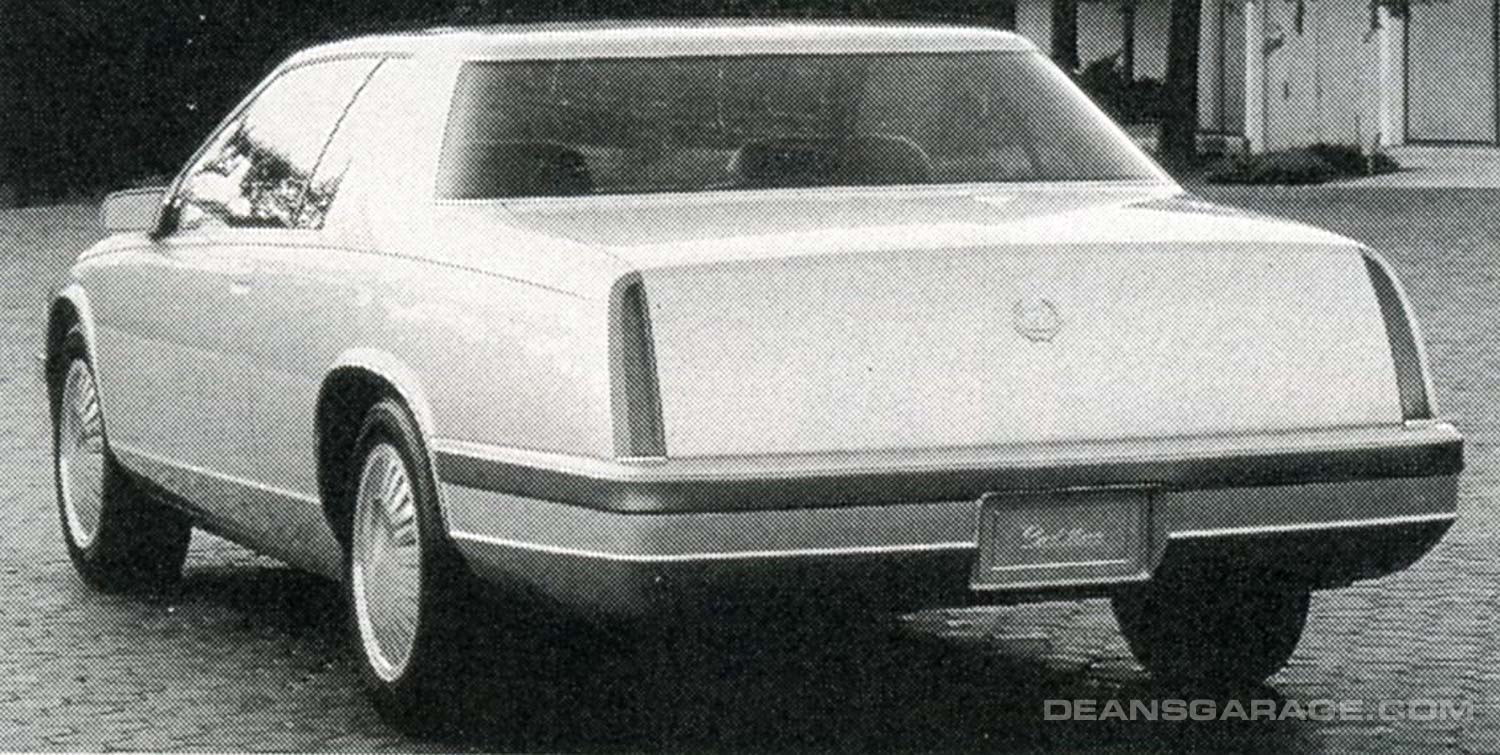
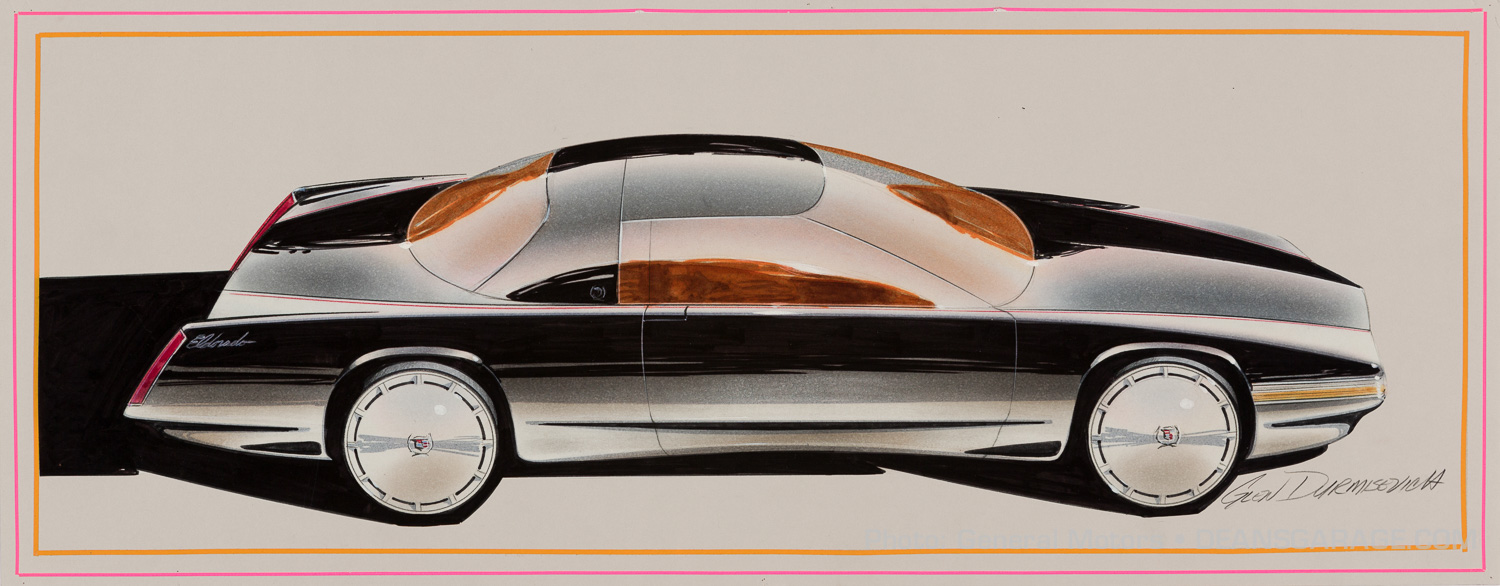
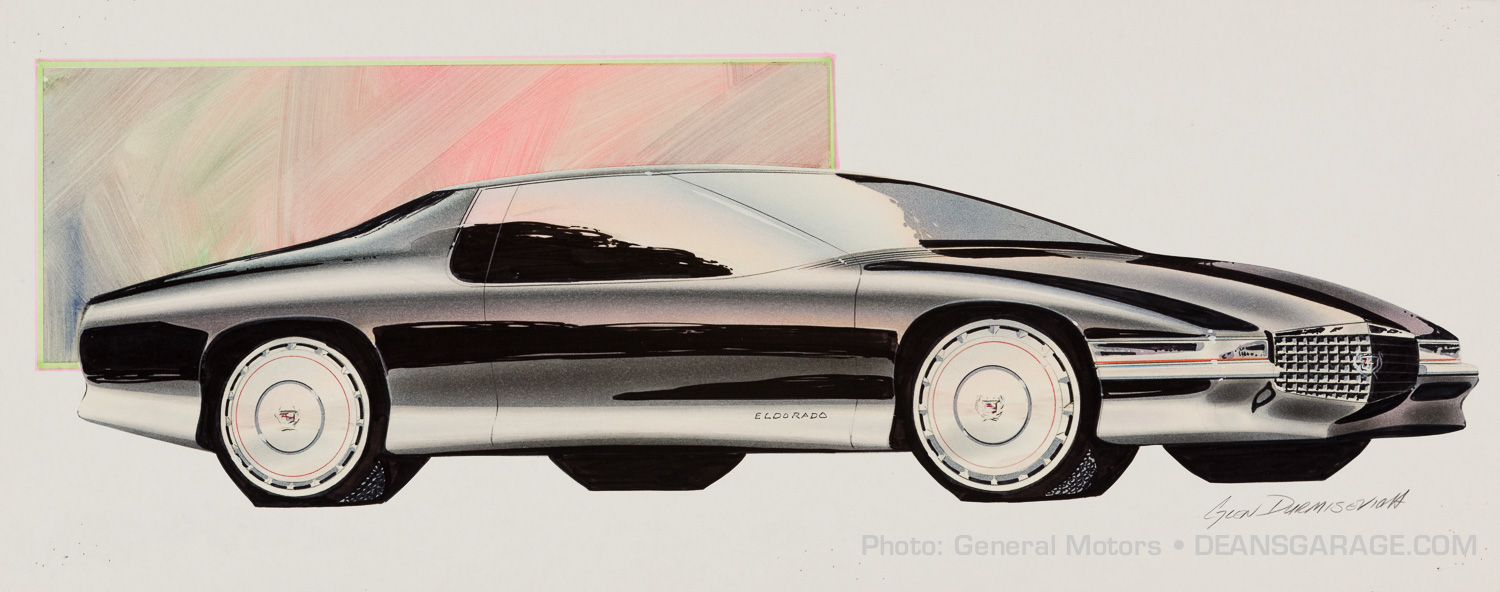
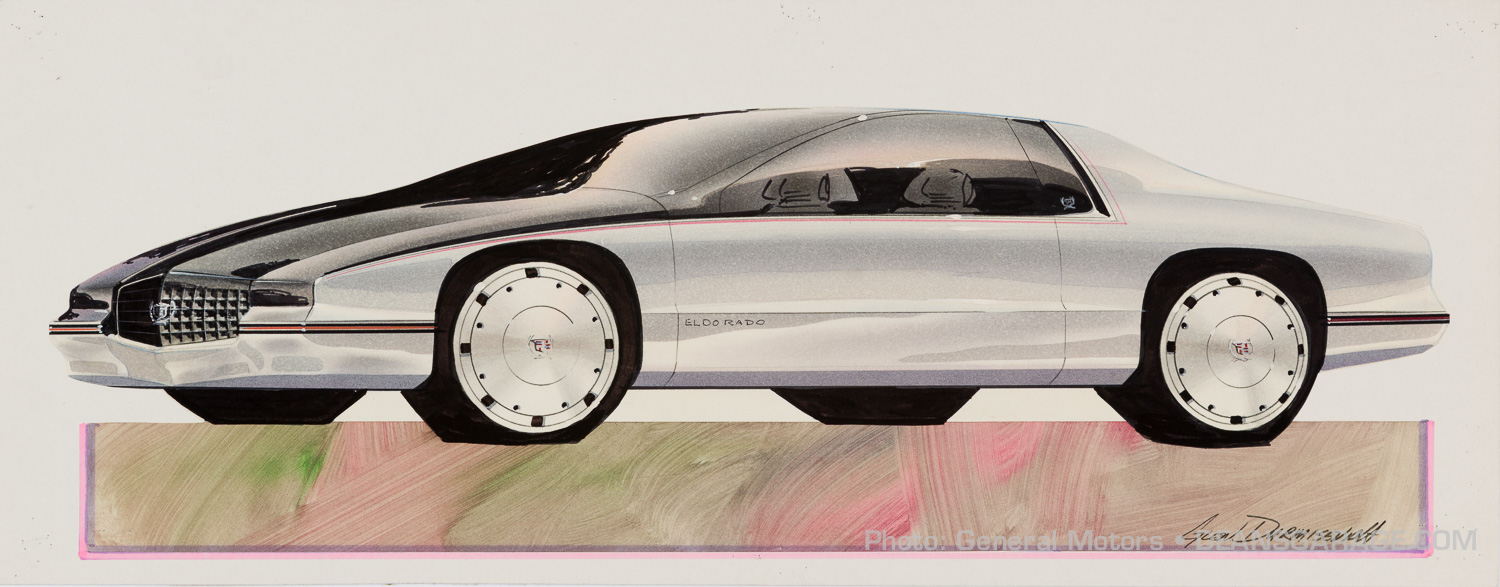
I like almost everything about the production ’92 Eldorado, except the clumsy vertical line of the forward edge of “C” pillar, and the resultant awkward triangular junction with the backlite where it joins the roof. It spoils the whole look for me. Rooflines used to be important (the Seville’s is superb). It appears to be a Pininfarina creation, to Cadillac studio’s credit.
When you started this series, I was confused that you had even been in the Cadilac design area. I am happy you got to Arizona.
I can tell you here that GARY’s comment about being fired was done tongue and cheek, he has a high sense of humor that is always near the surface. That never would’ve happened. Dave Holls once made a remark to me after I got to the Cadillac Studio, he questioned why all GM cars had to be a smooth shape running from the body side into the upper. That had been going on for years and years at GM Design and it certainly was as GARY describes, Chuck Jordan’s influence without question. They wanted to see what would happen in the Achieva was the result. A beautiful little car it was one of the outstanding designs produced.
I think what happened was that DAVE saw a solution in what GARY had done that was acceptable, and wanted to see through further investigation what the possibilities would be, that is, to use that approach on more than one kind of vehicle. Just my opinion.
Bookish? I don’t respect anonymous commentary.
The first rendering by Dermisevich is a wonderful design!
I agree with Jay. Dermisevich’s first rendering is gorgeous. Especially how he handled the taillights/rear end “fins.” Greenhouse is also very elegant.
I sure miss two-doors!
Great series, Gary.
Dick Ruzzin
It’s a tough world out on the internet.
Just a non-professional design groupie who likes his privacy.
I would certainly understand your concern if I were saying anything controversial or flaming anyone, but that’s not what I’m here for.
The “smooth shape running from the body side into the upper” — I first date that look from the ’68 A bodies, which I think were quite revolutionary at the time, highly imitated, and which I still think are beautiful. But I haven’t really seen much reporting on the design development of the ’68 A bodies; do you know who was responsible for that look?
Glen’s sketch is a beautiful concept, very cohesive and well delineated. However, if you look at where we ended up, we moved beyond the then current expression of form that is demonstrated in Glen’s sketch. We moved beyond that point to a more sheer, simple and expressive shape.
The Eldorado’s shape is very dramatic, although the design is very simple. When you stand near it, you see the curving plan view, the sheer simple surfaces. The form is developed horizontally. The Seville is somewhat different—its bodyshape is also an expression of conservative simplicity, but with more form. That is what relates it to the foreign cars of the time: Mercedes, Audi, and BMW. They were the competitors of Cadillac. Lexus and Infiniti both related closely to the German cars also and were more three-dimensional in their total form expression. That was the common direction for the day.
I think at this time I would see the Japanese cars as very calculated designs to relate to the market in America. What the Cadillac studio ended up after a long, hard search and collection of Cadillac culture was more a free form expression.
If you think of those Cadillacs from the late ’50s and ’60s, they were composed of large uninterrupted surfaces that were clean and simple. Even though we never talked about it, I think that’s where everyone thought we should be going, beyond what was being done by everyone else at the time, beyond the currently accepted form language. The simplicity is what we ended up with. Automotive design sculpture, as expressed in a very simplistic theme requires exceptional quality of execution to be successful. One of the influences on this for me was what Chuck Jordan had told me very early on in the program. He told me that they, I guess meaning he and DAVE, knew that I could design (and direct) a good looking car. The problem was I had to design the ‘right good looking car.’ And that’s why we went through so many different proposals until we passed the release date and had one more chance that resulted in the final design. To that point we had had many false starts, but we had not yet found it.
When we showed the car at the NAIAS, I was standing in the Cadillac exhibit when the chief designer of Lincoln came over and introduced himself. We talked briefly about the Eldorado, and it was clear he was not impressed. He invited me over to the Lincoln stand to see the new Lincoln Continental. When we got there, he made the statement that has remained with me for all these years. He said that “This car is new,” meaning, I supposed at the time, that the Eldorado was not.
I wasn’t surprised at that as we had designed the Eldorado to go beyond the current expression of form that was common in the industry at the time and especially seen in that Lincoln Continental.
Three years later, the Continental was gone, and the Eldorado was on it’s way to be produced for 12 years, the longest production run of any GM car in history, other than the C3 Corvette.
Just a comment about that sketch it is at the top of part 4. A sketch by Pen infarina’s designers. Notice how the car looks like a small car, a European small car. It has a stunted look, just the opposite of what we were trying to do.
GM put a Ferrari grille on the ’55 Chevy which made it a classic (monotone paint versions only). The dealers made them take it off on the ’56’s. The customer clinics were actually on to something with the protective rub strip. It should have been extended to the top of the front and rear bumpers, a la the ’86 Taurus and ’87 Acura Legend. That would have made a non-bling statement of sorts.
The dealers didn’t make CHEVROLET do anything. That was the time when changes had to be made every year so that the cars would look different. Changing a grill was the easiest thing you could do.
I get that- the annual changes. But the ’55-’56 Pontiacs were very lightly face lifted. Had Chevrolet kept the ’55 grille, they could have inserted a Corvette style chrome tooth grille for a slight update. BTW, I like your basement red car. My immediate thought: a much better looking ’94 DeVille.